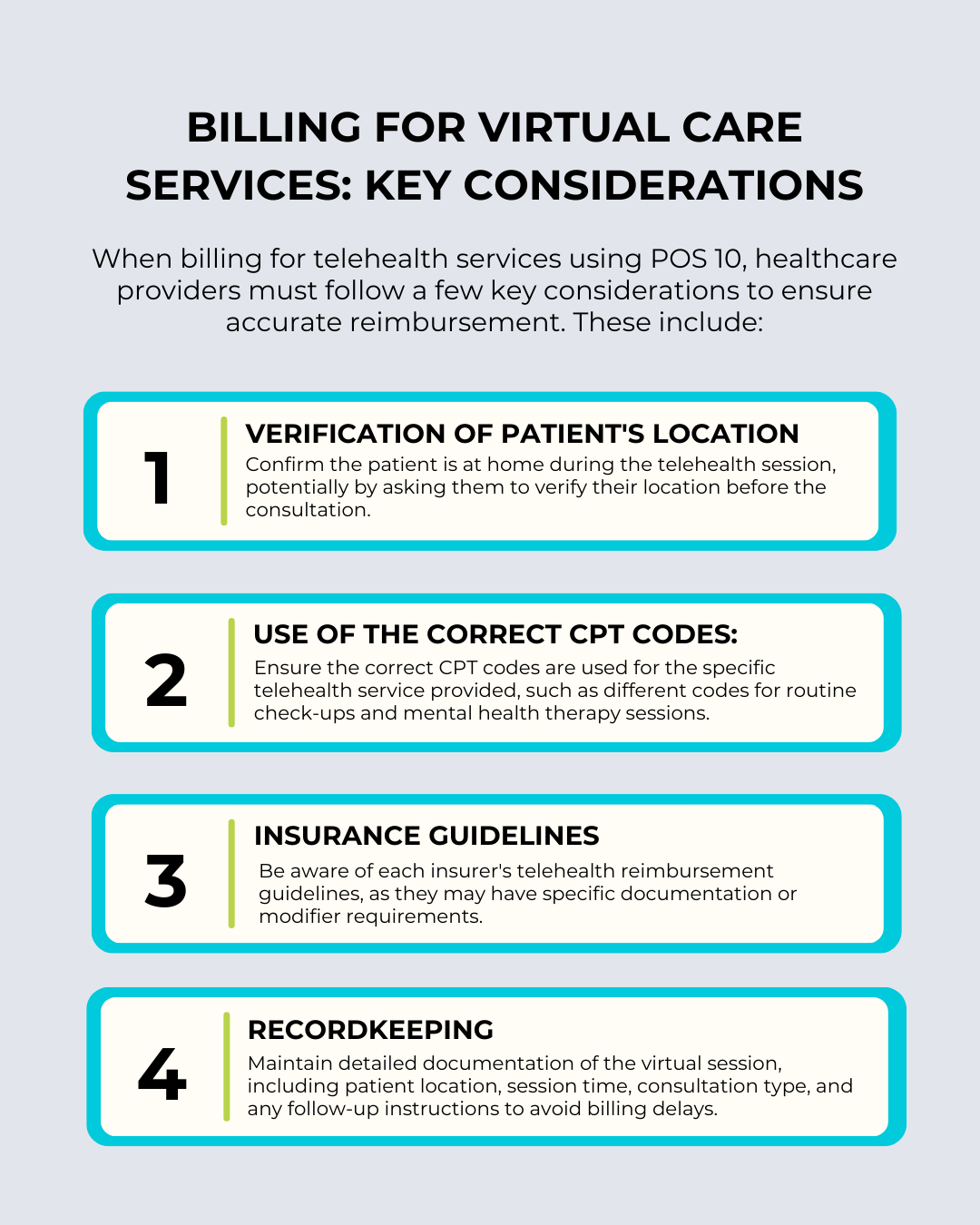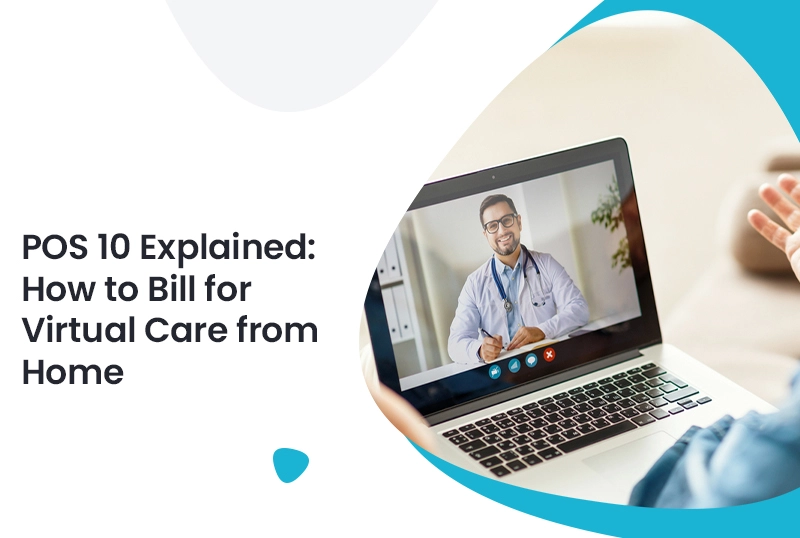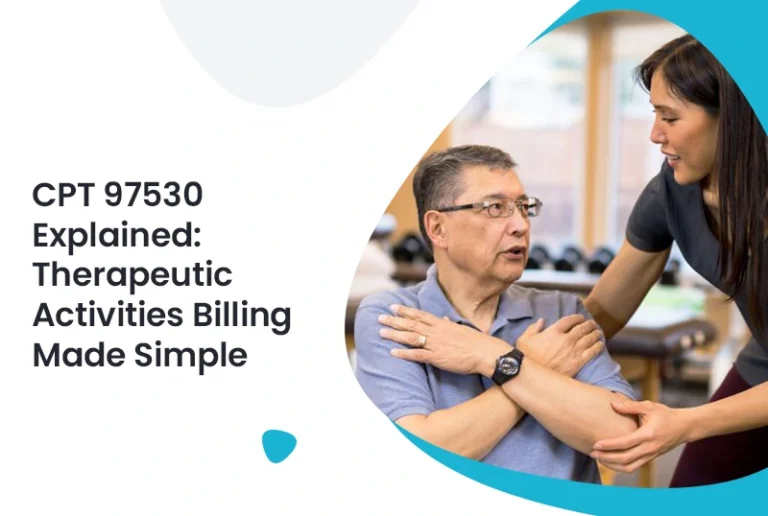Telehealth plays a key role in healthcare. It offers convenience for both patients and providers. Place of Service Code 10 applies to virtual care delivered at home. Medical professionals must understand this code to bill accurately. It ensures proper payment and insurance compliance. This guide explains how to use POS Code 10 for home-based virtual care.
What is POS 10?
POS 10, or “Place of Service Code 10,” tells insurers that a provider delivered telehealth services while the patient stayed at home. Healthcare providers use this code as part of the Place of Service (POS) system to specify where they performed the service. Providers rely on POS 10 to ensure they bill telehealth visits correctly and receive proper reimbursement, especially with rising virtual care demands during and after the pandemic.
Many healthcare providers now rely on telehealth as a core part of their services. When they apply the correct billing code, they bill insurers accurately for remote care delivered to patients at home. This coding step helps modernize healthcare and supports a smooth integration of telemedicine into regular medical practice.
When to Use POS 10
Use this billing code whenever you deliver healthcare services through telemedicine while the patient remains at home. This includes virtual consultations, follow-up visits, and mental health sessions conducted remotely. It is particularly important for Medicare and other insurers who need accurate data to reimburse telehealth services appropriately. Utilizing professional credential services can help ensure that all required documentation and certifications are in place for seamless billing and reimbursement.
To use POS 10 correctly, the healthcare provider must document the virtual care session, recording both the patient’s location and the nature of the service. This helps avoid confusion or mistakes that could delay payment or lead to claim denials.

How to Bill Using POS 10
Billing using POS 10 for telehealth services is relatively simple, but it requires careful attention to detail. Here’s a step-by-step guide on how to bill correctly:
- Identify the Service Provided: Begin by identifying the healthcare service provided to the patient. This will determine which CPT codes to use. For example, if the consultation was for a general health check-up, you might use a code like 99212, 99213, or 99214, depending on the complexity of the visit.
- Select the Correct Place of Service Code: When you submit the claim, enter the appropriate code in the designated field to show that you delivered the service via telemedicine while the patient was at home.
- Include Necessary Modifiers: Depending on the payer, you may need to use specific modifiers (e.g., GT or 95) to indicate that the service was provided via telemedicine. These modifiers help differentiate between in-person services and telehealth services for accurate reimbursement.
- Submit the Claim: After selecting POS 10 and using the correct CPT codes, submit the claim to the insurer. Ensure all documentation is in order, including the patient’s location, the service provided, and any other necessary information.
By following these steps, providers bill telehealth services accurately and stay compliant with insurance rules.
Importance of Accurate Billing with POS 10
Accurate billing is vital for ensuring proper reimbursement for telehealth services. The increasing use of telemedicine has brought attention to the need for correct coding and billing practices. When providers use the correct billing code, they avoid claim denials and receive fair payment for the virtual care they deliver.
For healthcare providers, working with a medical billing company can help streamline the billing process. These companies specialize in managing complex billing codes and ensuring that all claims are submitted accurately. A professional credential services provider can also help ensure that all the necessary documentation and certifications are in place for telehealth services.
Moreover, having an efficient (RCM ) healthcare system in place is essential. This system ensures that all aspects of the billing process, from patient intake to final payment, are handled seamlessly. By optimizing revenue cycle management, healthcare providers can maximize reimbursements and minimize the time it takes to receive payments.
By understanding POS 10 and following proper billing practices, healthcare providers ensure that they receive proper reimbursement for telehealth services, allowing them to continue offering quality care through virtual platforms.
FAQs (Frequently Asked Questions)
1. What is POS 10 used for in telehealth billing?
POS 10 is used to indicate that a healthcare service was provided to a patient through telemedicine while the patient is located at home. It ensures accurate billing and reimbursement for virtual care.
2. Can POS 10 be used for all types of telehealth services?
POS 10 can be used for various telehealth services, including consultations, follow-up appointments, and mental health services, as long as the patient is at home during the virtual care session.
3. Do I need to use POS 10 for every telehealth visit?
POS 10 should only be used for telehealth services provided to patients at home. For services rendered in other locations, such as a healthcare facility, different POS codes should be used.
4. How do I ensure that my POS 10 billing is accurate?
Ensure that the patient’s location is correctly documented, use the correct CPT codes, and adhere to the specific insurance requirements for telehealth billing. Accurate record-keeping is essential for smooth billing.
5. Can a medical billing company help with POS 10 billing?
Yes, a medical billing company can help ensure that POS 10 is used correctly and that all claims are submitted with the appropriate documentation, helping to streamline the billing process and improve reimbursement accuracy.







